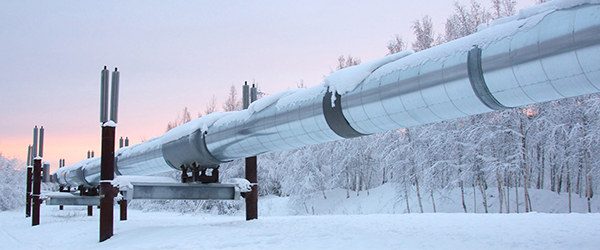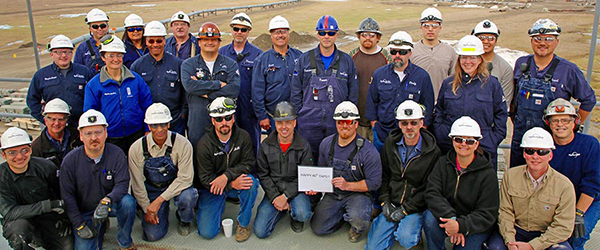Happy Earth Day 2021
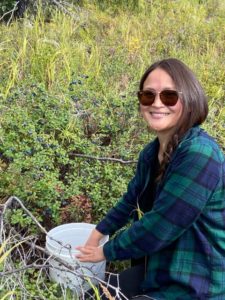
Happy Earth Day! Check out these vignettes that illustrate just a few of the countless ways Alyeska and our passionate pipeline people are committed to protecting and sustaining the special environment we work in and share with our fellow Alaskans, visitors and amazing wildlife. #EarthDay #TAPSPride
Meet Alice Joseph, who works in Alyeska’s Environment Team and focuses on environmental compliance, permitting and planning, which is key to Alyeska’s commitment to protecting the amazing places we work. Of her team and role, Alice said, “The team I work on is responsible for ensuring environmental regulatory compliance in order to protect water, air, fish and wildlife, and habitat. It’s important to me to protect and respect the environment to help sustain a healthy environment and its natural resources. I want to continue to pass on my cultural traditions of hunting, fishing, and gathering to future generations.”
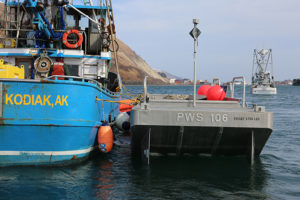
The SERVS Vessel of Opportunity Program is a critical piece of partnership and preparedness in Prince William Sound. Alyeska contracts with more than 400 vessels around Prince William Sound to provide oil spill response support. The program was started in 1990 to employ locals in oil spill response, especially those working in the fishing industry. Today, the boats and their crews are an integral part of Alyeska’s response readiness and trusted team members. For six weeks each spring, and another two weeks in the fall, SERVS personnel and other contractor partners provide training to crews in six ports around the Sound and other local communities: Kodiak, Homer, Seward, Whittier, Cordova and Valdez. These photos were taken during training in Kodiak earlier this month. After training was online-only in 2020, SERVS and others worked hard to move forward with in-person training this year, with COVID-protocols in place. Learn more about the program and Alyeska’s oil spill response capabilities.
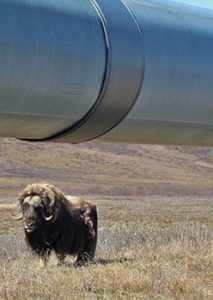 As a truly Alaska company staffed with Alaskans, Alyeska and TAPS workers are dedicated to protecting our state’s wildlife and their way of life, as well as the areas where they live and thrive. This commitment dates back to construction, when engineers had the foresight to design animal crossings along the 800-mile TAPS route. 579 animal crossings, in fact – 554 are elevated at the minimum of 10-feet high; 23 buried, each about 200 feet long; and 2 buried and refrigerated. Learn more about wildlife on TAPS.
As a truly Alaska company staffed with Alaskans, Alyeska and TAPS workers are dedicated to protecting our state’s wildlife and their way of life, as well as the areas where they live and thrive. This commitment dates back to construction, when engineers had the foresight to design animal crossings along the 800-mile TAPS route. 579 animal crossings, in fact – 554 are elevated at the minimum of 10-feet high; 23 buried, each about 200 feet long; and 2 buried and refrigerated. Learn more about wildlife on TAPS.
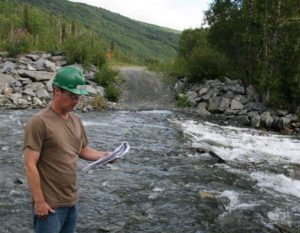
Alyeska’s commitment to environmental excellence is embodied in its fish stream surveillance and repair work. The work performed by our Environment team prevents potential impacts to 34 fish species identified in 749 active fish stream drainage structures crossed by TAPS that can be caused by natural erosion and work activity. They ensure that work along TAPS complies with regulations set internally and by numerous external agencies, including Alaska’s Department of Fish and Game, and that fish and their environment are safe and sustained.
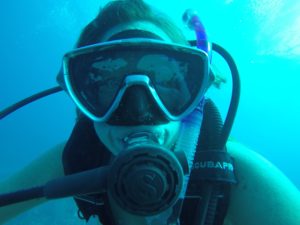
Meet Tia Anderson, who is a response coordinator on the Ship Escort Response Vessel System (SERVS) team. She focuses on training to make sure personnel and contractors alike are ready to respond in the event of an emergency. Tia says, “As a response coordinator at SERVS, environmental stewardship is central to my job duties; our job is literally to prevent and respond to oil spills. My family has made its living on the ocean for generations, so I am especially sensitive to water habitat quality. When the spill of 1989 happened, I was on a fishing boat in the Gulf of Alaska. As we made our way into Valdez, the Exxon Valdez was still hard aground on Bligh Reef. What we saw that day, and for months afterwards while cleaning up the spill, was life changing.” At work and at play, she’s passionate about maintaining a healthy environment. “I spend time in the outdoors in order to get back to what is real and truly important. It is when I am diving or fishing in the ocean, skiing or snowshoeing in the mountains, or just sitting on my deck admiring the gorgeous views around me that I am able to relax and reaffirm my priorities in life.”
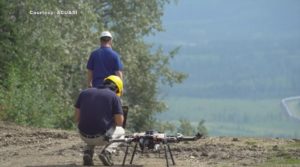
Drones are used along TAPS for multiple reasons, including during drills to help increase the surveillance area that can be covered to spot oiled or impacted wildlife during a potential incident. Alyeska is transforming with technology and continues to find new drone applications to improve the work by Alyeska’s Environment and Emergency Response teams. Alyeska even helped make drone history in 2019 by partnering in the first U.S. beyond-line-of-sight mission for an unmanned aircraft. Learn more about drones on TAPS.
